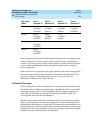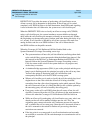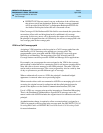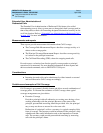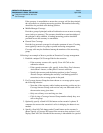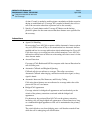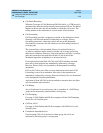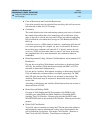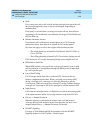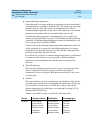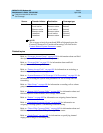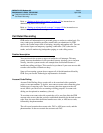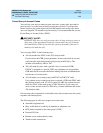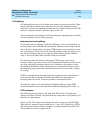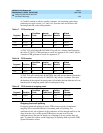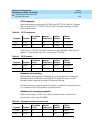
DEFINITY ECS Release 8.2
Administrator’s Guide
555-233-506
Issue 1
April 2000
Features and technical reference
1218Call Coverage
20
■ Hold
If a covering user puts a call on hold, and the principal picks up on the call,
the coverage appearance may or may not be dropped, depending on
administration.
If any party is on hold when a coverage call routes off-net, that call does
not undergo call classification, even when the Coverage of Calls Redirected
Off-Net field is
y.
■ Internal Automatic Answer
If an internal call is redirected to another phone by a Call Coverage
redirection criteria, then that call is eligible for IAA at that phone.
IAA does not apply to calls to the original called extension when:
— The called phone has activated Do Not Disturb, Send All Calls, or
Cover All Calls
— The calling phone has selected Go To Cover before placing the call
Calls directed to a Coverage Answering Group are not eligible for IAA.
■ ISDN End-to-End Calls
When ISDN facilities carry an off-net coverage call entirely (end-to-end),
call classification is accomplished through the ISDN protocol rather than
by a call classifier port.
■ Leave Word Calling
Call Coverage can be used with or without LWC. However, the two
features complement each other. When a covering user activates LWC
during a coverage call, a message is left for the principal to call the
covering user. When a covering user activates Coverage Callback during a
coverage call, a message is left for the principal to call the internal caller.
■ Night Service
Calls routed to the night station via Night Service follow the coverage path
of the night extension under all coverage criteria except Send All Calls.
■ Privacy — Manual Exclusion
When the primary or principal user bridges onto a call that went to
coverage and has been answered at the coverage point, the user is not
dropped when Privacy — Manual Exclusion is activated.
■ R2-MFC Signaling
Coverage of Calls Redirected Off-Net competes with the R2-MFC
Signaling feature for Call Classifier - Detector ports.



